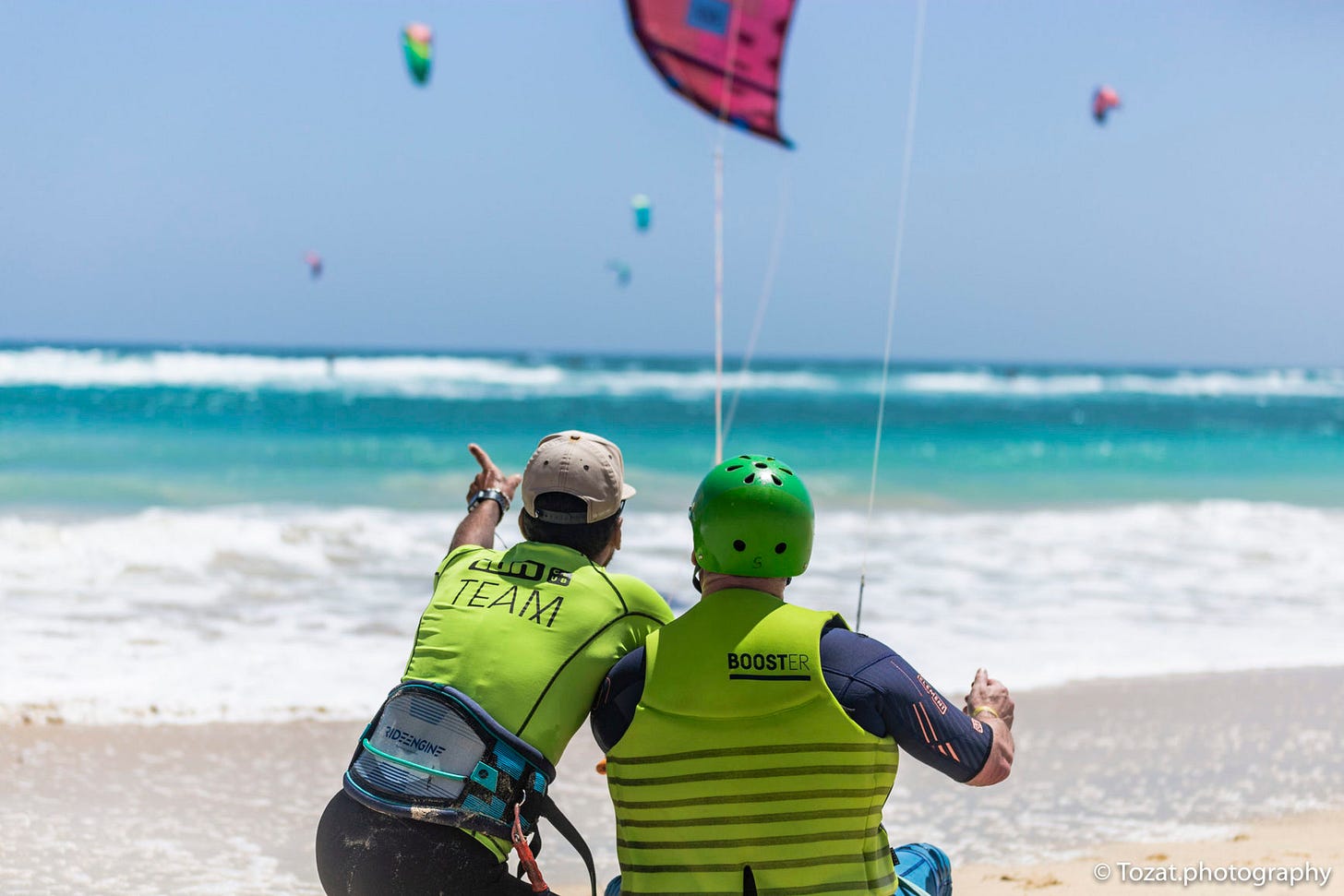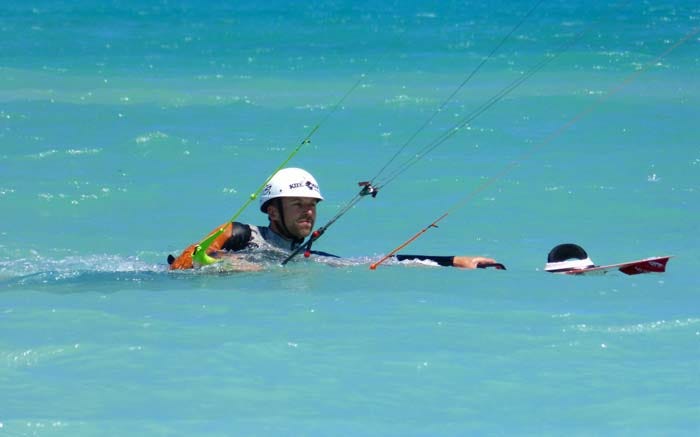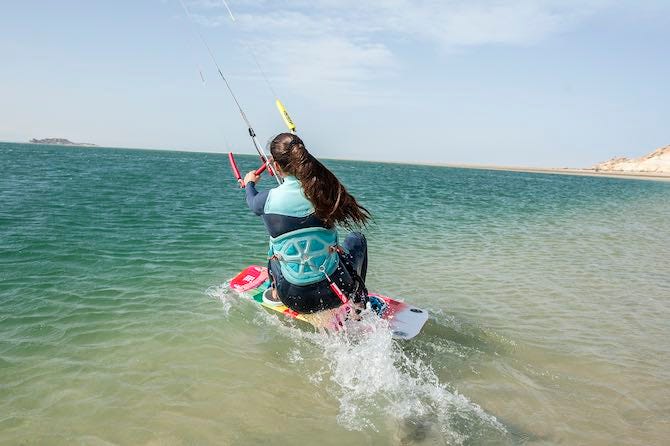How to make progress
(from the very beginning)
If the many kitesurfers on the beach elicit your interest, you might be wondering what it takes to become a kitesurfer. Today I'd like to explain the general steps you need to take to become an independent kitesurfer.
At a certified kite school, such as those recognized by IKO or VDWS, your journey begins with the theory of kite flight.
Although it might appear boring, paying close attention to this information is crucial. Instructors will guide you through using the safety system, provide fundamental insights into the physics of kite flight, and detail how to effectively utilize it to get onto the water and start riding.
Afterwards you will learn how to fly a kite, probably at the beach or in shallow waters. The initial experience of flying a kite might be intimidating but you don't have to be scared if you payed attention beforehand. Many beginner courses pair two students per kite, allowing you to utilize half of the allocated time for kite use, while also benefiting from the learning that arises from observing others' errors.
As a third step you will learn how to bodydrag, i.e. how to move in the water without a board. You will experience the pull of the kite and the actual power. Keep in mind that bodydragging serves a purpose beyond fun: it equips you with the know-how to retrieve your board or reach the shore in emergency situations. You cannot practice bodydragging long enough and should be able to drag downwind and upwind before you practice the waterstart.
If you catch a week with plenty of wind then you might even progress to practicing waterstarts by the end (though many participants will not come into direct contact with a kiteboard during their initial course). The time investment for the above steps amounts to around 10 hours in a group course.
I highly recommend watching "beginner kiteboarding lessons" on YouTube in advance and to absorb as much theoretical information as possible. Additionally, consider investing in a small soft/trainer kite, typically around 1-3 square meters in size. While they may cost between 100-200€, they can potentially save you double that amount if you're new to kite flying. Following your group course, you'll likely refresh your bodydragging skills and then proceed to work on your waterstart technique. During your initial attempts, your power dives (kite movement) will likely be either too slight or too forceful, preventing you from finding the optimal point for initiating the ride. Instead, you will find yourself either staying close to the water's surface or unintentionally jumping over the board downwind. However, employing the correct technique will ensure that you emerge unscathed and motivated to persist in your efforts (more advice on mastering the waterstart coming soon).
When you've eventually reached the breakthrough point and commenced your kitesurfing journey, it's probable that you'll develop an addiction to this sport! Once you know how to turn and go upwind you are an independent kiteboarder. When participating in a group course, it's important to keep in mind that you'll typically spend only half of your time actively flying a kite as I mentioned before. This is because, in most cases, two students share one kite, and another part of the time is devoted to setting up the equipment and disassembling it afterwards. In the beginning your body needs time to adjust to movements related to kitesurfing so it will be taxing and little breaks when your partner is steering the kite might be better for you anyway.
However, if you're feeling confident and well-prepared, private lessons could be the way to go. Although pricier (80-100€/h), private lessons often lead to faster skill development compared to group courses, especially when you want to progress further, after your initial group courses. In as little as four to five private lessons, you'll likely find yourself proficient in bodydragging and maybe even water starts. Once you've reached this stage, it's time to assess your comfort level. You can decide whether you feel confident enough to rent equipment. Many kite schools offer rental services that include supervision while you're out on the water.
Alternatively, you can continue with more private lessons to further enhance your skills :)





